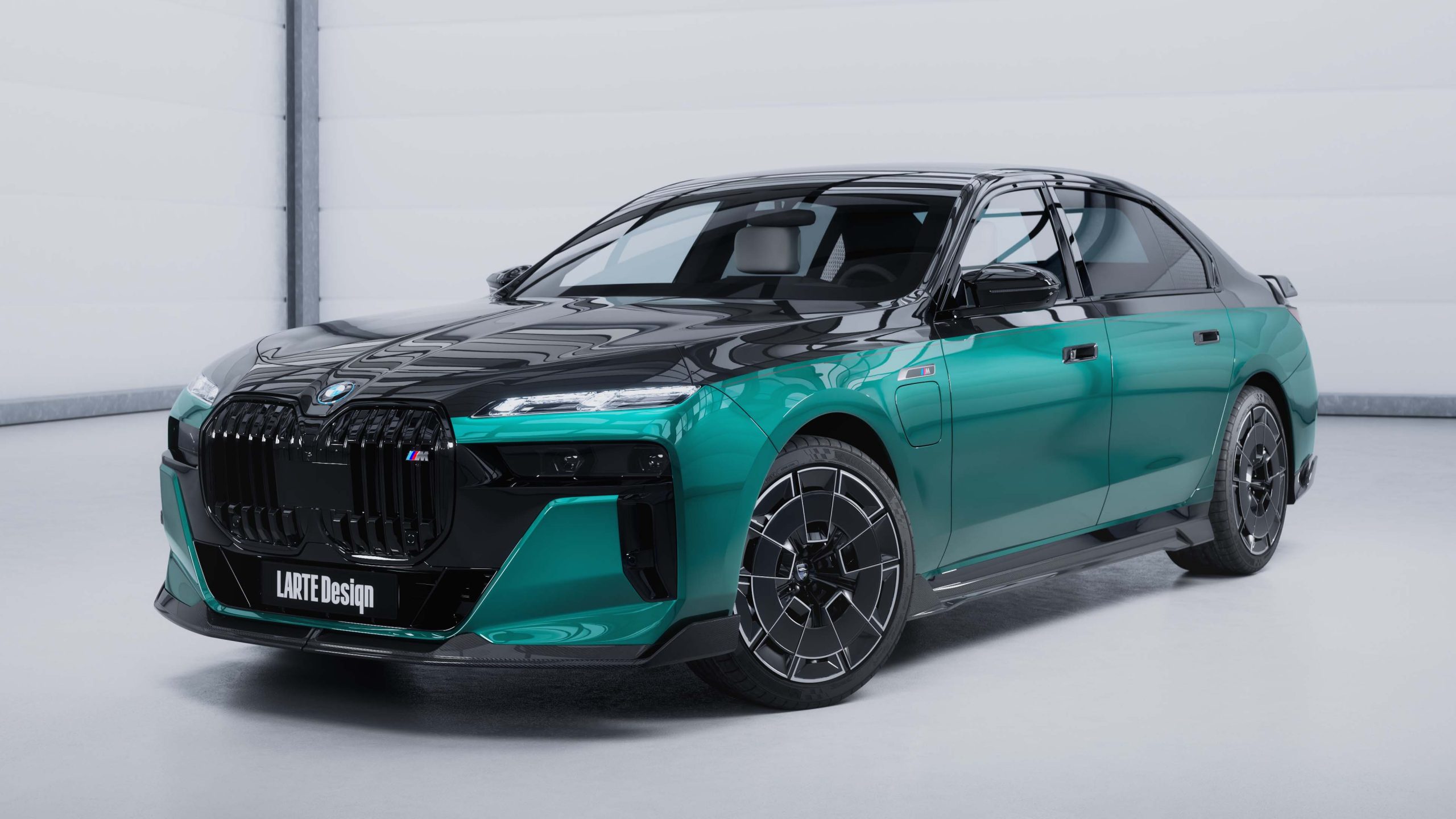In today’s connected world, smartphone integration has become a crucial factor in automotive purchasing decisions. The quality of audio streaming and Bluetooth connectivity can make or break the daily driving experience, whether you’re commuting through traffic or embarking on long road trips.
Sedans, as the traditional backbone of family transportation, have evolved significantly in their technological offerings, with manufacturers investing heavily in premium audio systems and seamless smartphone integration.
The landscape of sedan audio technology has transformed dramatically over the past few years. Premium brands have partnered with renowned audio companies like Harman Kardon, Bose, Bang & Olufsen, and Meridian to deliver concert-hall quality sound reproduction within the confines of a vehicle cabin.
These systems feature multiple strategically placed speakers, advanced digital signal processing, and sophisticated acoustic tuning that considers the unique challenges of automotive environments.
However, not all sedans are created equal when it comes to audio performance and smartphone connectivity. While some vehicles offer pristine sound quality with crystal-clear Bluetooth streaming, others suffer from connectivity issues, audio compression artifacts, and poor system integration that can frustrate even the most patient drivers.
Understanding these differences is essential for making an informed purchasing decision, especially as we increasingly rely on our smartphones for navigation, communication, and entertainment during our daily drives.
This comprehensive guide examines ten sedans across the spectrum of audio performance, highlighting five models that excel in smartphone audio quality and five that struggle with Bluetooth connectivity issues.
Each vehicle has been evaluated based on multiple criteria, including audio fidelity, Bluetooth stability, smartphone integration features, user interface design, and overall system responsiveness.
5 Sedans with Exceptional Smartphone Audio Quality
These exceptionally engineered vehicles feature premium audio processing systems and precision-calibrated Bluetooth connectivity that deliver crystal-clear smartphone audio reproduction through years of reliable wireless streaming across diverse music formats and call quality demands.
Their thoughtful engineering includes advanced digital signal processors, high-fidelity speaker arrays, and robust wireless protocols that resist the audio degradation typically created by interference sources or compression artifacts during high-bitrate streaming sessions.
From audiophile-quality music playback that preserves studio recording nuances to hands-free calling that maintains conversation clarity in noisy highway conditions, these remarkable infotainment systems continue providing exceptional sound reproduction without developing connectivity dropouts or audio quality deterioration.
Owners report concert-hall listening experiences with these sophisticated audio solutions a entertainment-enhancing quality feature that proves its worth through immersive sound staging and pristine wireless audio transmission throughout daily driving routines.
1. 2025 Lucid Air Grand Touring
The 2025 Lucid Air Grand Touring represents the pinnacle of automotive audio engineering, featuring the revolutionary Surreal Sound Pro system that redefines what’s possible in vehicle audio reproduction.
The 2025 Lucid Air Grand Touring puts a spotlight on audio innovation with its Surreal Sound Pro system. Lucid equips this luxury all-electric sedan with 21 speakers, each carefully positioned to create a surround-sound experience that’s as immersive as it is precise.
The Surreal Sound Pro system’s 21-speaker configuration isn’t just about quantity; it’s about strategic placement and acoustic precision. Each speaker is individually tuned and positioned based on extensive acoustic modeling of the Air’s cabin architecture.
The system includes dedicated tweeters, mid-range drivers, and subwoofers that work in perfect harmony to create a three-dimensional soundstage that rivals high-end home audio systems. The speakers are powered by multiple amplifiers delivering over 1,000 watts of clean, distortion-free power.
Smartphone integration in the Lucid Air is exemplary, supporting both Apple CarPlay and Android Auto wirelessly with virtually no latency. The Bluetooth 5.2 implementation ensures stable connections even in areas with heavy electromagnetic interference.
The system supports high-resolution audio codecs including aptX HD and LDAC, allowing for near-lossless streaming from compatible smartphones.
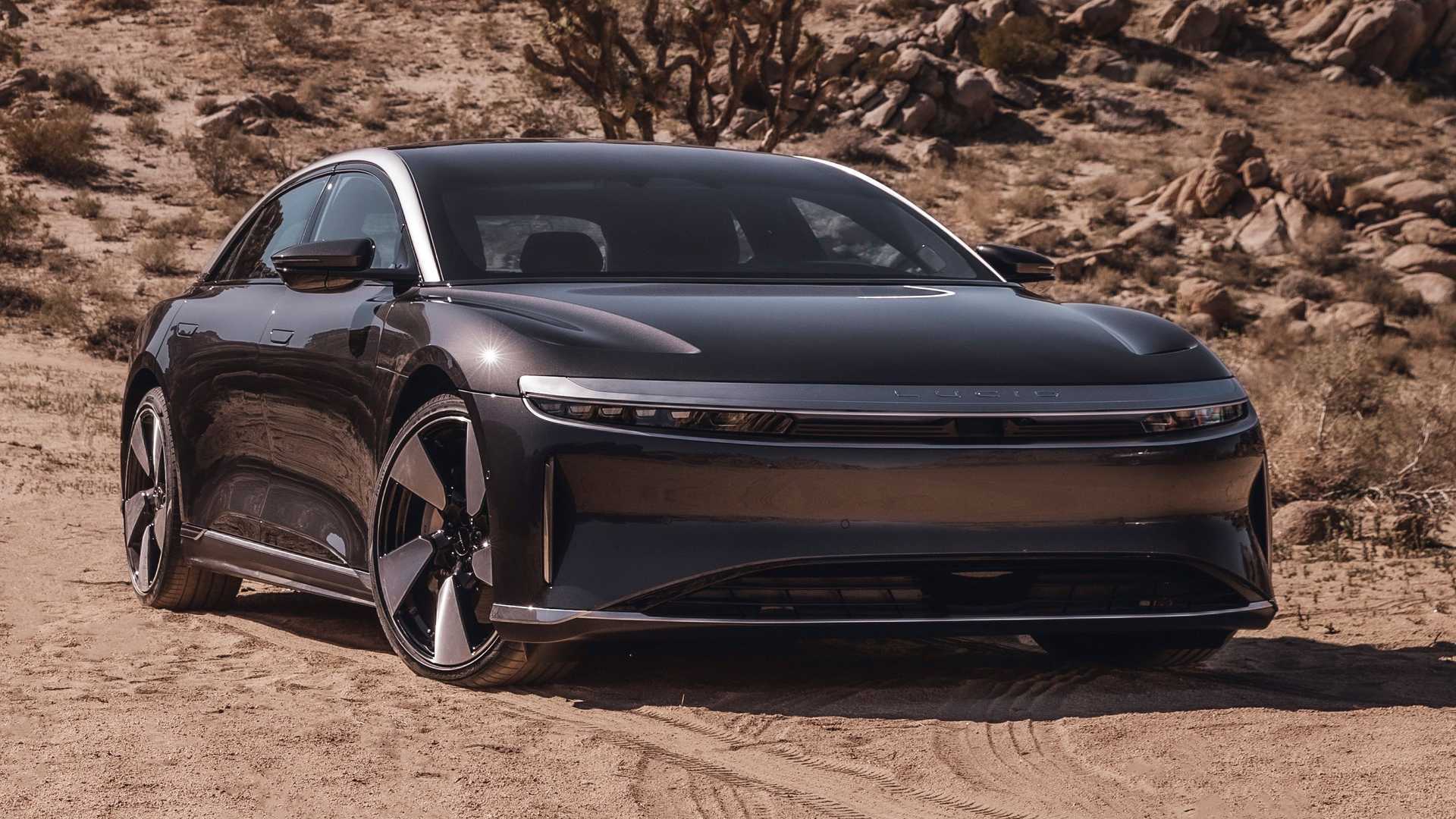
Audio enthusiasts will appreciate the system’s ability to reproduce the full dynamic range of high-quality recordings, from the softest whispers to thunderous crescendos.
The user interface is intuitive and responsive, featuring a massive 34-inch curved Glass Cockpit display that provides easy access to audio controls and settings.
The system offers extensive customization options, including multiple listening modes optimized for different music genres and seating positions. The acoustic tuning can be adjusted in real-time, allowing passengers to optimize the sound for their preferred seating position.
What sets the Lucid Air apart is its attention to acoustic engineering fundamentals. The cabin has been designed with sound quality in mind, featuring strategically placed sound-dampening materials and optimized interior geometry that minimizes unwanted reflections and standing waves.
The result is a listening environment that allows the Surreal Sound Pro system to perform at its absolute best, delivering audio quality that must be experienced to be believed.
The system also features advanced noise cancellation technology that works in conjunction with the vehicle’s inherently quiet electric powertrain. This creates an incredibly serene listening environment where even subtle musical details can be appreciated.
The combination of exceptional hardware, sophisticated software processing, and meticulous acoustic engineering makes the Lucid Air Grand Touring the undisputed champion of automotive audio reproduction.
2. 2025 Mercedes-Benz S-Class
The 2025 Mercedes-Benz S-Class continues the tradition of automotive luxury with its available Burmester High-End 4D Surround Sound system, representing one of the most sophisticated audio implementations in the sedan segment.
This system represents a collaboration between Mercedes-Benz and Burmester, a prestigious German audio manufacturer known for their reference-quality home audio equipment.
The Burmester system in the S-Class features 31 high-performance speakers strategically positioned throughout the cabin, including innovative “exciters” integrated into the seats that provide tactile bass response.
This 4D approach adds a physical dimension to audio reproduction, allowing passengers to literally feel the music. The system delivers an impressive 1,750 watts of power through multiple amplifiers, each specifically matched to drive their assigned speakers for optimal performance.
Smartphone connectivity in the S-Class is seamless and sophisticated, featuring the latest MBUX infotainment system with wireless Apple CarPlay and Android Auto integration.
The Bluetooth implementation is rock-solid, maintaining stable connections even when the phone is buried in a bag or pocket. The system supports advanced audio codecs and can stream high-resolution audio files without noticeable compression artifacts.
The acoustic tuning of the Burmester system is nothing short of remarkable. German audio engineers spent countless hours optimizing the system for the S-Class cabin, taking into account factors such as seat materials, window glass, and interior trim pieces.
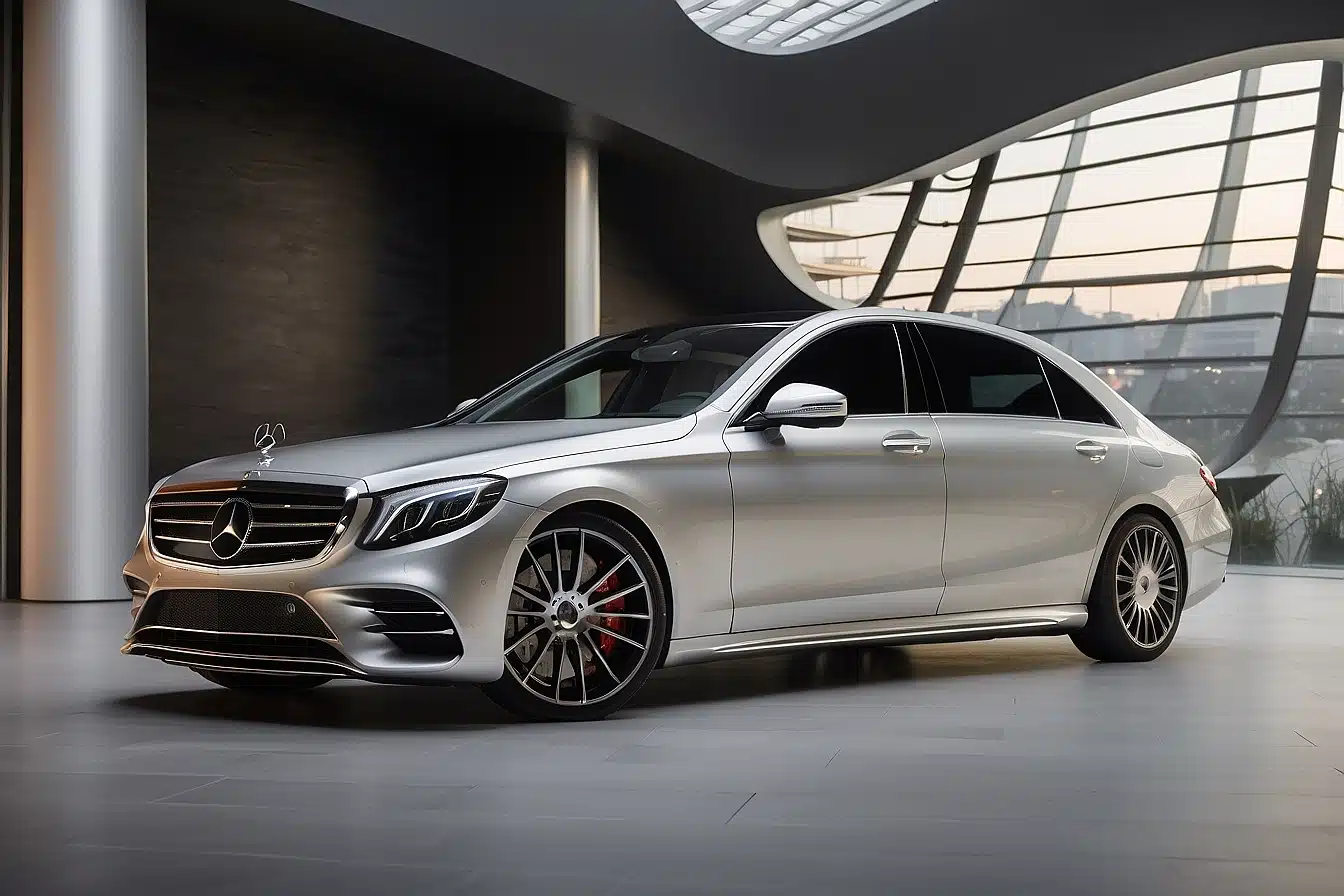
The result is a perfectly balanced soundstage that maintains its coherence regardless of seating position. The system offers multiple listening modes, including a “Concert Hall” setting that recreates the acoustics of famous European concert venues.
What makes the S-Class Burmester system particularly impressive is its ability to adapt to different driving conditions. The system continuously monitors cabin noise levels and automatically adjusts the audio processing to maintain optimal sound quality.
This means that highway cruising, city driving, and parking all result in consistently excellent audio reproduction without requiring manual intervention from the driver or passengers.
The user interface is elegantly integrated into the S-Class’s luxurious interior design. The system can be controlled through multiple methods, including the central touchscreen, steering wheel controls, voice commands, and even gesture recognition.
The graphics are crisp and intuitive, making it easy to access advanced features like the 7-band equalizer and surround sound processing options.
The attention to detail extends to the physical components as well. The Burmester speakers feature distinctive illuminated grilles that add to the cabin’s ambient lighting scheme.
The subwoofers are mounted in acoustically optimized enclosures that prevent unwanted vibrations from affecting sound quality. Every aspect of the system has been engineered to deliver an audio experience worthy of the Mercedes-Benz S-Class reputation for uncompromising luxury and performance.
3. 2025 BMW 7 Series
The 2025 BMW 7 Series elevates automotive audio to new heights with its available Bowers & Wilkins Diamond Surround Sound system, a collaboration between the Bavarian automaker and the renowned British audio manufacturer.
This system represents the pinnacle of automotive audio technology, incorporating design elements and technologies directly derived from Bowers & Wilkins’ flagship home audio speakers.
The Diamond Surround Sound system features 30 speakers, including the signature Diamond dome tweeters that give the system its name. These tweeters utilize actual diamond material in their construction, providing unparalleled clarity and detail in high-frequency reproduction.
The diamond dome technology, borrowed from Bowers & Wilkins’ reference-quality home speakers, ensures that every musical nuance is reproduced with stunning accuracy and precision.
Smartphone integration in the BMW 7 Series is exemplary, featuring the latest iDrive 8 system with wireless connectivity for both Apple CarPlay and Android Auto. The Bluetooth implementation is robust and reliable, maintaining strong connections even in challenging RF environments.
The system supports high-resolution audio streaming and can handle virtually any audio format your smartphone can produce, from standard MP3 files to high-resolution FLAC recordings.
The acoustic engineering behind the Diamond Surround Sound system is truly impressive. BMW’s audio engineers worked closely with Bowers & Wilkins to optimize the system specifically for the 7 Series cabin.
The speaker placement has been carefully calculated to create an immersive three-dimensional soundstage that envelops all occupants. The system includes dedicated amplifiers for different frequency ranges, ensuring that each speaker operates in its optimal range without distortion.
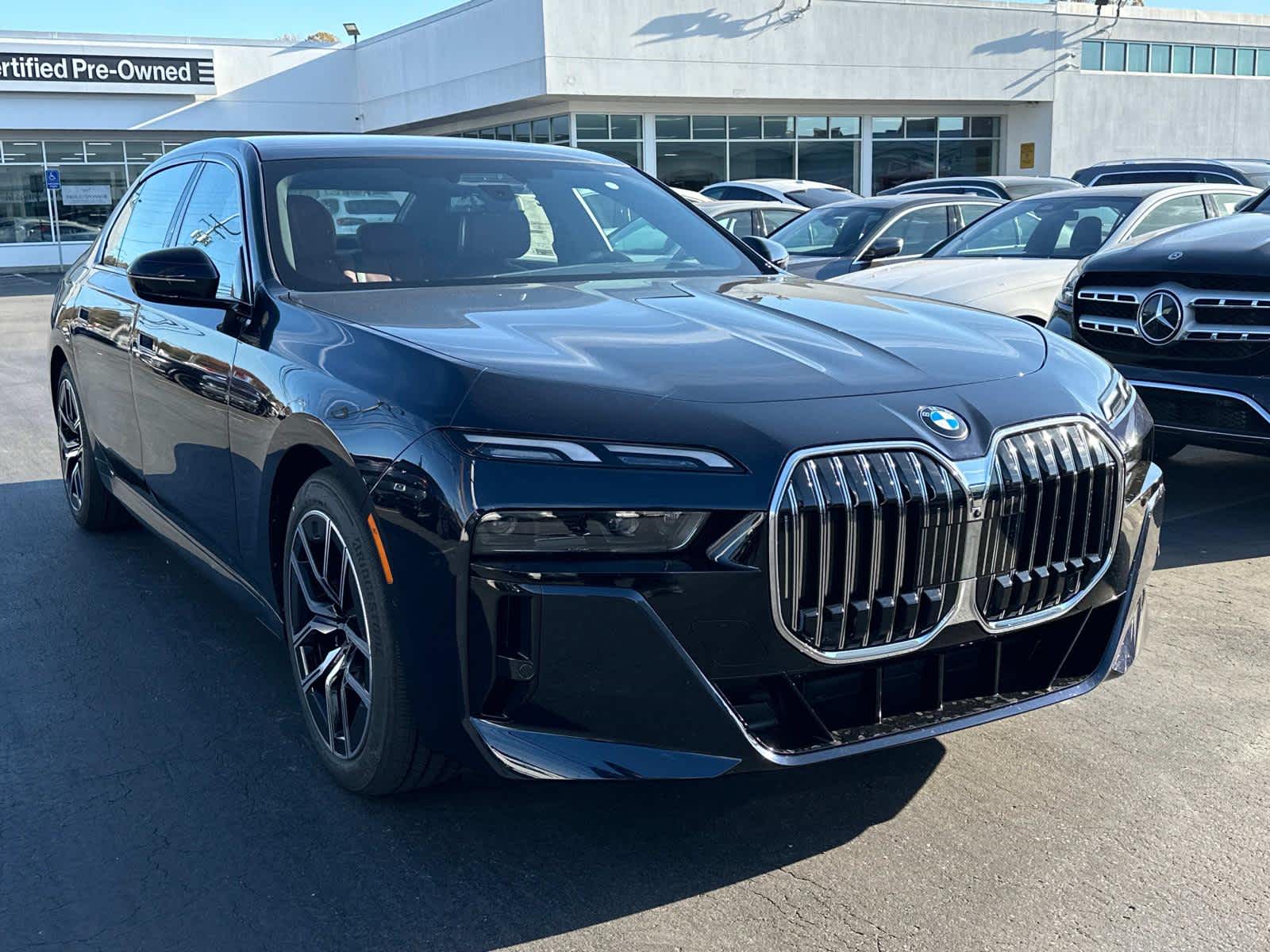
One of the standout features of this system is its ability to create multiple listening zones within the cabin. Rear passengers can enjoy their own audio experience through dedicated speakers and amplifiers, while front occupants listen to something completely different.
This level of sophistication is rarely seen in automotive audio systems and demonstrates BMW’s commitment to passenger comfort and convenience.
The user interface is integrated seamlessly into BMW’s iDrive system, providing intuitive access to all audio functions through the central display, steering wheel controls, or voice commands.
The system offers extensive customization options, including multiple equalizer presets, surround sound processing modes, and the ability to fine-tune the audio for individual seating positions. The graphics are crisp and responsive, making it easy to navigate through the system’s many features.
What truly sets the Diamond Surround Sound system apart is its attention to acoustic detail. The system includes advanced digital signal processing that compensates for cabin acoustics in real-time, ensuring optimal sound quality regardless of driving conditions or passenger configuration.
The bass response is particularly impressive, with multiple subwoofers positioned strategically throughout the cabin to provide deep, controlled low-frequency reproduction without overwhelming the mid-range and high frequencies.
The physical design of the speakers is as impressive as their performance. The Bowers & Wilkins speakers feature distinctive illuminated grilles that complement the 7 Series’ luxurious interior design.
The build quality is exceptional, with each speaker constructed to the same standards as Bowers & Wilkins’ high-end home audio products. This attention to detail ensures that the Diamond Surround Sound system will provide years of exceptional audio performance.
4. 2025 Genesis G90
The 2025 Genesis G90 represents South Korean luxury at its finest, featuring the available Lexicon Premium Audio System that delivers world-class sound quality in an elegantly appointed cabin.
Lexicon, a company with deep roots in professional audio and home theater equipment, has applied its expertise to create an automotive audio system that rivals the best in the industry.
The Lexicon system in the G90 features 23 carefully selected and positioned speakers, each chosen for its specific acoustic characteristics and role in the overall sound reproduction.
The system delivers 900 watts of clean, distortion-free power through multiple amplifiers, each optimized for its specific frequency range. The speaker selection includes high-quality dome tweeters, precision mid-range drivers, and powerful subwoofers that work together to create a cohesive and immersive listening experience.
Smartphone connectivity in the Genesis G90 is exceptional, featuring the latest iteration of Genesis’ infotainment system with wireless Apple CarPlay and Android Auto support.
The Bluetooth implementation is rock-solid, providing stable connections with minimal latency. The system supports high-quality audio codecs, ensuring that music streamed from smartphones maintains its dynamic range and frequency response.
The wireless charging pad keeps smartphones powered while maintaining the Bluetooth connection. The acoustic tuning of the Lexicon system is particularly noteworthy.
Genesis engineers worked closely with Lexicon’s audio specialists to optimize the system for the G90’s cabin architecture. The tuning process involved extensive computer modeling and real-world testing to ensure that every seat in the vehicle provides an optimal listening experience. The result is a perfectly balanced soundstage that maintains its coherence and imaging regardless of seating position.
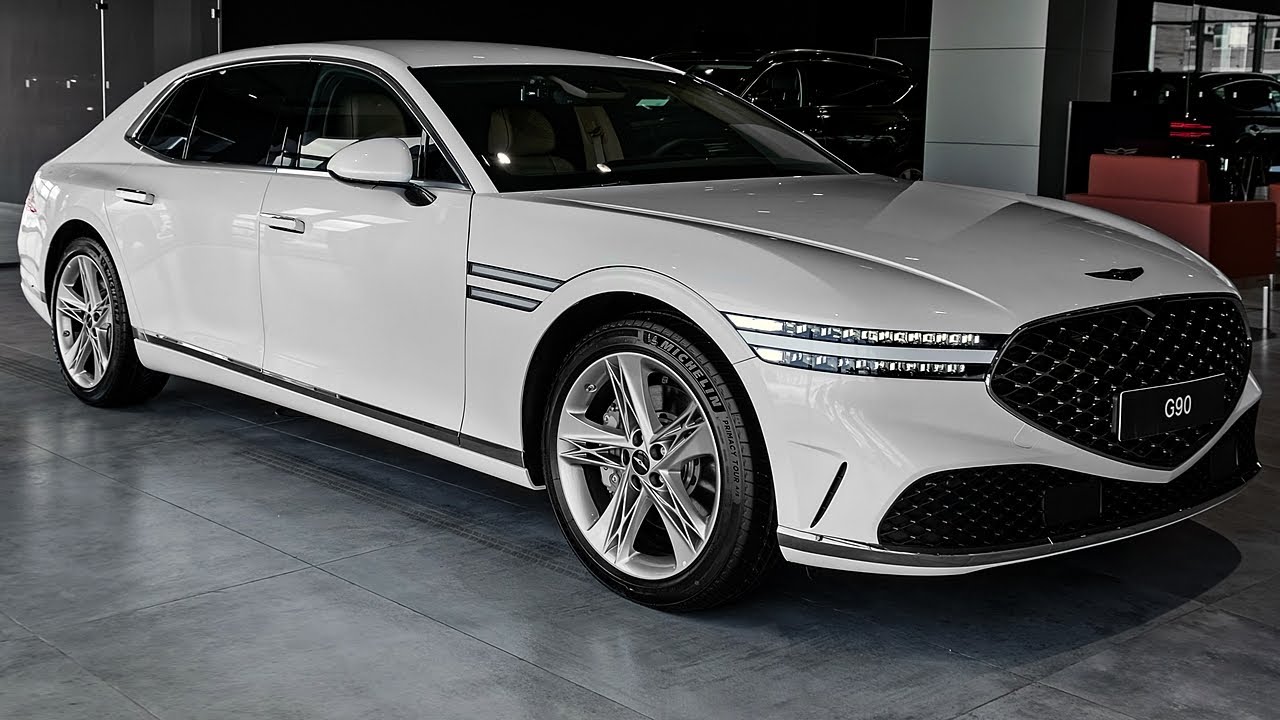
One of the standout features of the Lexicon system is its sophisticated digital signal processing. The system continuously analyzes the audio signal and applies real-time corrections to compensate for cabin acoustics, road noise, and other environmental factors.
This ensures that the audio quality remains consistently excellent regardless of driving conditions. The processing is transparent and musical, enhancing the listening experience without introducing artificial coloration or distortion.
The user interface is elegantly integrated into the G90’s luxurious interior design. The system can be controlled through the central touchscreen, steering wheel controls, or voice commands.
The interface is intuitive and responsive, providing easy access to advanced features like the graphic equalizer, surround sound processing, and listening mode selection. The graphics are beautifully rendered and complement the overall design aesthetic of the G90’s interior.
What makes the Genesis G90 Lexicon system particularly impressive is its ability to handle a wide variety of musical genres with equal skill. Whether you’re listening to classical music, jazz, rock, or electronic music, the system reproduces each genre with the appropriate character and dynamics.
The frequency response is smooth and extended, with deep, controlled bass and crystalline highs that never sound harsh or fatiguing. The build quality of the Lexicon system components is exceptional, with each speaker constructed to professional audio standards.
The amplifiers feature advanced thermal management and protection circuits that ensure reliable operation even during extended listening sessions at high volume levels. The wiring and interconnects are of audiophile quality, minimizing signal degradation and ensuring that every musical detail reaches the speakers intact.
The attention to acoustic detail extends to the G90’s interior design as well. The cabin features strategic placement of sound-dampening materials and acoustic panels that optimize the listening environment.
The result is a quiet, refined space where the Lexicon Premium Audio System can perform at its absolute best, delivering an audio experience that rivals dedicated listening rooms.
Also Read: 5 Trucks with the Best CNG/LPG Options and 5 Without Alternative Fuels
5. 2025 Audi A8
The 2025 Audi A8 concludes our list of exceptional audio performers with its available Bang & Olufsen Advanced Sound System, a collaboration between the German luxury automaker and the legendary Danish audio manufacturer.
This system represents the perfect marriage of Scandinavian design aesthetic and German engineering precision, delivering an audio experience that is both technically sophisticated and emotionally engaging.
The Bang & Olufsen system in the A8 features 23 strategically positioned speakers, including the distinctive pop-up acoustic lens tweeters that are a signature element of Bang & Olufsen’s design philosophy.
These tweeters emerge from the dashboard when the system is activated, creating a visual spectacle that matches the system’s impressive audio performance.
The system delivers 1,920 watts of power through multiple amplifiers, each specifically designed to drive its assigned speakers for optimal performance.
Smartphone integration in the Audi A8 is seamless and sophisticated, featuring the latest MMI infotainment system with wireless connectivity for both Apple CarPlay and Android Auto.
The Bluetooth implementation is exceptionally stable, maintaining strong connections even in challenging electromagnetic environments. The system supports high-resolution audio codecs and can stream audiophile-quality files without noticeable compression or loss of dynamic range.
The acoustic engineering behind the Bang & Olufsen system is truly remarkable. The system utilizes advanced 3D sound technology that creates an immersive listening experience by precisely controlling the timing and phase relationships between speakers.
This creates a three-dimensional soundstage that extends beyond the physical boundaries of the cabin, making listeners feel as though they’re sitting in the middle of a live performance.
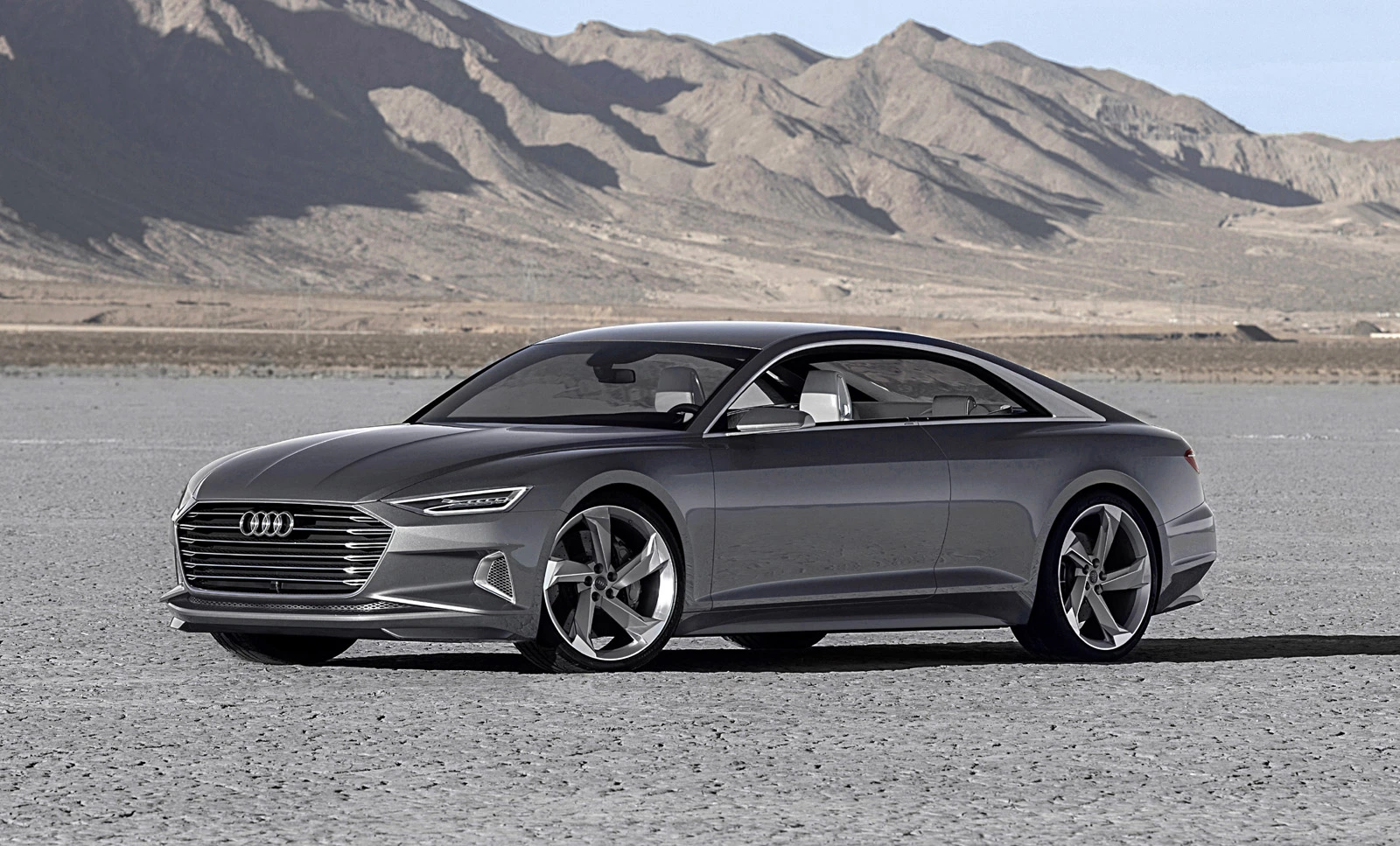
One of the most impressive features of the Bang & Olufsen system is its ability to adapt to different listening preferences and seating configurations. The system offers multiple sound modes, including settings optimized for the driver, all passengers, or specific seating positions.
The “Concert Hall” mode recreates the acoustics of famous venues, while the “Jazz Club” setting provides the intimate atmosphere of a small music venue.
The user interface is beautifully integrated into the A8’s high-tech interior environment. The system can be controlled through Audi’s Virtual Cockpit, the central MMI display, steering wheel controls, or voice commands.
The interface is intuitive and visually appealing, with graphics that reflect Bang & Olufsen’s minimalist design philosophy. Advanced features like the graphic equalizer and surround sound processing are easily accessible and user-friendly.
What sets the Bang & Olufsen system apart is its attention to both technical performance and aesthetic design. The speakers feature distinctive aluminum grilles with illuminated acoustic lenses that create a sophisticated visual element within the A8’s interior.
The build quality is exceptional, with each component constructed to the exacting standards that Bang & Olufsen is known for in their high-end home audio products.
The system’s frequency response is remarkably smooth and extended, with deep, controlled bass that never overwhelms the midrange and treble frequencies.
The midrange reproduction is particularly noteworthy, providing exceptional clarity for vocals and instruments. The high-frequency reproduction is crisp and detailed without ever sounding harsh or fatiguing, even during extended listening sessions at higher volume levels.
The acoustic tuning of the system takes into account the unique characteristics of the A8’s cabin, including the effects of different interior materials, seating configurations, and window positions.
The result is a perfectly balanced sound that maintains its character regardless of the listening environment or driving conditions. The system’s ability to provide consistent, high-quality audio reproduction makes every drive a truly enjoyable musical experience.
5 Sedans with Problematic Bluetooth Connectivity
These audio-challenged vehicles struggle with poor smartphone connectivity due to outdated Bluetooth hardware and inadequate audio processing systems that create persistent static, connection interruptions, and compressed sound quality during wireless streaming and hands-free calling operations.
Their problematic engineering includes limited codec support, insufficient signal filtering, and basic antenna designs that amplify the audio distortion typically associated with wireless interference or bandwidth limitations.
From frequent audio dropouts during music streaming to garbled voice quality that makes phone conversations difficult to understand, these Bluetooth systems demand constant reconnection attempts and volume adjustments.
Owners discover that while these sedans offer solid transportation reliability, their wireless audio technology requires frequent troubleshooting and provides frustratingly inconsistent sound quality that diminishes the driving experience and limits hands-free communication effectiveness.
1. 2024 Nissan Altima
The 2024 Nissan Altima, while offering good value and practicality in the midsize sedan segment, unfortunately suffers from significant Bluetooth connectivity issues that can make smartphone integration a frustrating experience for daily drivers.
These problems stem from both hardware limitations and software implementation issues that affect the overall user experience. The primary issue with the Altima’s Bluetooth system is its inconsistent connection stability.
Many owners report frequent disconnections, particularly when the vehicle is started or when transitioning between different audio sources. The system often fails to automatically reconnect to previously paired devices, requiring manual intervention through the infotainment system.
This becomes particularly problematic during commutes when drivers expect seamless connectivity for navigation prompts and hands-free calling.
Audio quality through the Altima’s Bluetooth connection is notably compressed and lacks the clarity found in more premium systems. The system appears to use older audio codecs that heavily compress the signal, resulting in a muddy, indistinct sound that particularly affects music with complex arrangements or wide dynamic ranges.
Bass response is weak and artificial, while high frequencies often sound harsh and distorted, especially at higher volume levels. The pairing process itself is often problematic, with the system failing to recognize devices that should be compatible. When pairing does succeed, the system frequently loses stored device information, requiring users to repeat the pairing process regularly.
This is particularly frustrating for families with multiple smartphones, as the system struggles to manage multiple paired devices effectively.
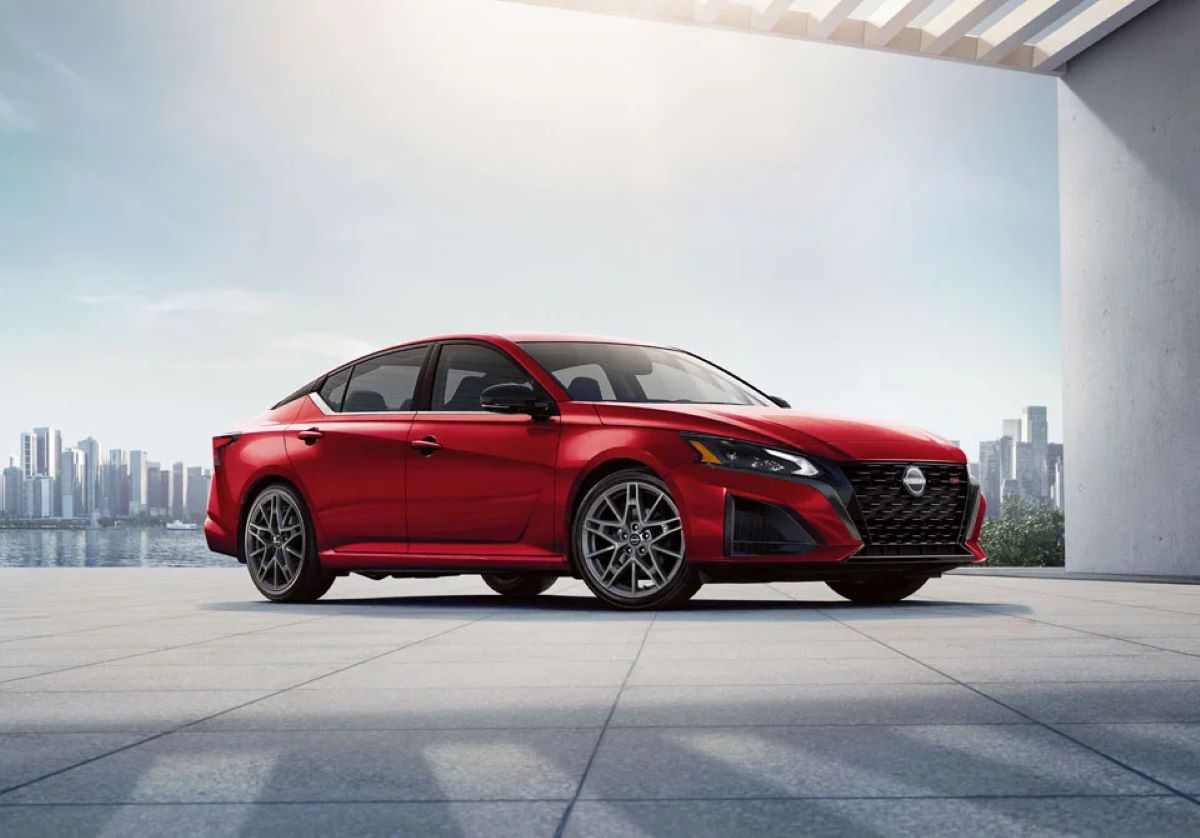
Latency issues are another significant problem with the Altima’s Bluetooth implementation. There’s often a noticeable delay between audio playback commands and actual response from the system.
This affects not only music playback but also navigation prompts and phone calls, creating a disjointed user experience that detracts from the driving experience.
The user interface for Bluetooth management is clunky and unintuitive, with small text and confusing menu structures that make it difficult to troubleshoot connection issues while driving.
The system lacks the sophistication found in premium vehicles, with limited customization options and poor integration with smartphone features like voice assistants.
Call quality through the Altima’s Bluetooth system is particularly poor, with frequent audio dropouts, echo issues, and poor noise cancellation that make hands-free communication challenging.
The microphone positioning and processing seem inadequate for highway driving conditions, where wind and road noise can overwhelm the system’s ability to provide clear communication.
Software updates for the infotainment system are infrequent and often fail to address the underlying Bluetooth connectivity issues. Many owners report that dealer service departments are unable to resolve these problems, suggesting that the issues are fundamental to the system’s design rather than easily correctable software bugs.
2. 2024 Mitsubishi Outlander
The 2024 Mitsubishi Outlander, while technically a crossover SUV, represents the kind of connectivity problems that plague vehicles with outdated infotainment technology.
These issues serve as a cautionary example of how poor Bluetooth implementation can significantly impact the ownership experience, regardless of a vehicle’s other merits.
The Outlander’s Bluetooth system appears to be based on significantly older technology standards, resulting in compatibility issues with modern smartphones.
The system frequently fails to recognize newer iPhone and Android devices, and when connections are established, they’re often unstable and prone to unexpected disconnections.
This is particularly problematic given that smartphone technology evolves rapidly, leaving the Outlander’s system increasingly obsolete. Audio streaming quality through the Outlander’s Bluetooth connection is consistently poor, with noticeable compression artifacts and a narrow frequency response that makes music sound flat and lifeless.
The system appears to use basic audio codecs that heavily compress the signal, resulting in a listening experience that’s far below what users expect from their smartphone’s built-in speakers, let alone a vehicle’s sound system.
The user interface for managing Bluetooth connections is particularly frustrating, with a small, low-resolution display that makes it difficult to read device names and connection status.
The menu structure is confusing and requires multiple button presses to access basic functions like device pairing or audio source selection. This poor interface design makes troubleshooting connection issues nearly impossible while driving.
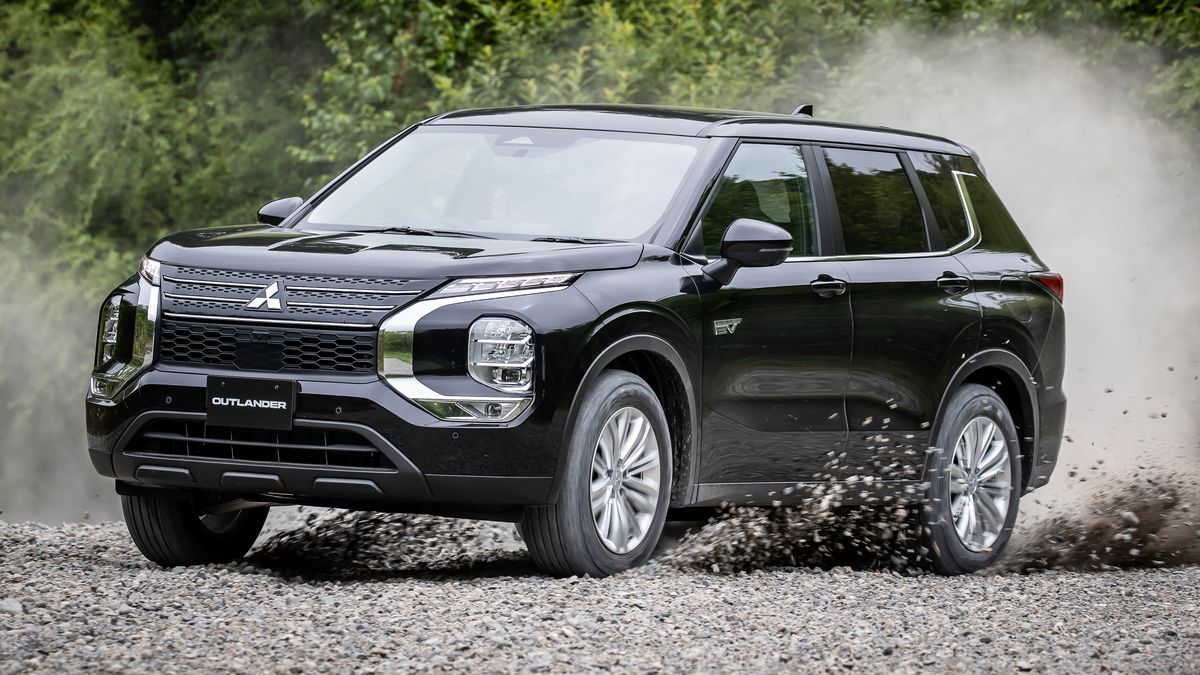
One of the most frustrating aspects of the Outlander’s Bluetooth system is its inability to maintain stable connections during phone calls. Users frequently report calls dropping without warning, poor audio quality with significant distortion, and echo issues that make hands-free communication nearly unusable.
The system’s noise cancellation is inadequate, allowing road and wind noise to overwhelm conversations. The pairing process is unreliable and often requires multiple attempts to successfully connect a device.
Even when pairing appears successful, the system may not remember device settings or may fail to automatically reconnect on subsequent vehicle starts. This forces users to manually reconnect their devices regularly, which is both inconvenient and potentially dangerous while driving.
Media playback control through the Bluetooth connection is equally problematic. The system often fails to display track information correctly, if at all, and playback controls may not respond to input from the vehicle’s interface.
Users report that basic functions like skipping tracks or adjusting volume often fail to work properly, forcing them to use their smartphone directly instead of the vehicle’s controls.
The lack of software updates for the infotainment system means that these connectivity issues persist throughout the vehicle’s ownership period. Mitsubishi’s dealer network often lacks the tools or knowledge to address these problems, leaving owners with few options for improvement.
This highlights the importance of choosing vehicles with robust, updatable infotainment systems that can evolve with changing technology standards.
3. 2024 Subaru Legacy
The 2024 Subaru Legacy presents a frustrating case study in inconsistent Bluetooth performance, where the system works well under certain conditions but fails unpredictably in others.
This inconsistency makes it difficult for owners to rely on the system for daily smartphone integration needs, creating an unreliable user experience that detracts from the vehicle’s otherwise solid reputation.
The most problematic aspect of the Legacy’s Bluetooth system is its unpredictable connection behavior. The system may work flawlessly for weeks, then suddenly begin experiencing frequent disconnections and pairing failures.
This inconsistency makes it impossible for users to develop reliable workarounds or patterns for successful operation, leading to ongoing frustration and reduced confidence in the system’s reliability.
Audio quality through the Legacy’s Bluetooth connection varies significantly depending on environmental conditions and device compatibility. Some smartphones produce acceptable audio quality, while others result in heavily compressed, distorted sound that makes music listening unenjoyable.
This variability suggests poor codec negotiation and compatibility issues between the vehicle’s system and different smartphone manufacturers. The Legacy’s Bluetooth system struggles particularly with device switching and multi-device management.
When multiple smartphones are paired to the system, it often becomes confused about which device should be connected, leading to failed connections or connections to unintended devices. This is particularly problematic for families who share the vehicle and expect seamless switching between different users’ smartphones.
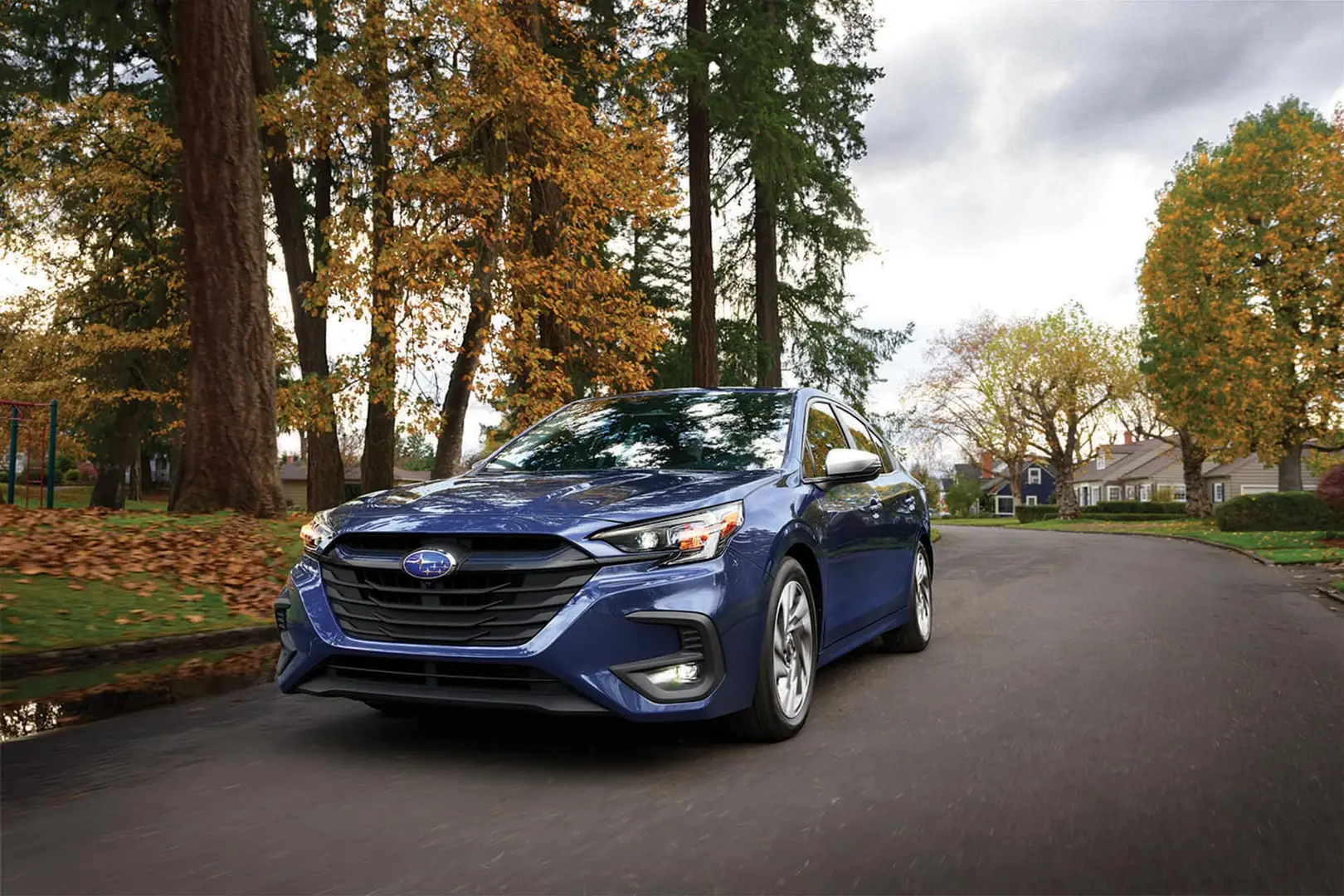
Call quality through the Legacy’s Bluetooth system is inconsistent, with some calls sounding clear and others suffering from significant audio dropouts, echo, or distortion.
The system’s performance seems to degrade over time during extended calls, suggesting possible memory leaks or processing issues that affect audio quality. Highway driving conditions particularly stress the system, with wind and road noise often overwhelming the microphone array.
The user interface for Bluetooth management in the Legacy is adequate but lacks the refinement found in premium vehicles. The system provides basic functionality for pairing and connection management, but troubleshooting tools are limited.
When problems occur, users have few options for diagnosing or resolving issues without visiting a dealer service department. One particularly frustrating issue with the Legacy’s Bluetooth system is its tendency to interfere with other vehicle systems.
Some owners report that Bluetooth connectivity problems coincide with issues with the vehicle’s Wi-Fi hotspot, navigation system, or even the backup camera display.
This suggests that the infotainment system’s architecture may have fundamental design flaws that affect overall system stability. Software updates for the Legacy’s infotainment system are available, but often fail to address the underlying Bluetooth connectivity issues.
Some owners report that updates worsen connectivity problems, suggesting that the system’s hardware may be inadequate to support the software’s full functionality. This creates a situation where owners must choose between having the latest features and maintaining stable Bluetooth connectivity.
4. 2024 Hyundai Elantra
The 2024 Hyundai Elantra represents the challenges faced by budget-conscious sedan buyers when it comes to smartphone connectivity and audio quality.
While the vehicle offers excellent value in many areas, its Bluetooth system suffers from the limitations inherent in cost-conscious engineering decisions that prioritize affordability over technological sophistication.
The Elantra’s Bluetooth system uses basic hardware components that struggle to maintain stable connections with modern smartphones. The system frequently drops connections, particularly when the phone is moved within the vehicle or when transitioning between different network conditions.
This instability is most noticeable during phone calls, where conversations are frequently interrupted by connection drops that require manual reconnection.
Audio streaming quality through the Elantra’s Bluetooth connection is noticeably inferior to what users experience with more expensive vehicles. The system appears to use aggressive compression algorithms that sacrifice audio quality for connection stability, resulting in a flat, lifeless sound that lacks the dynamics and frequency response of the original recording.
This is particularly noticeable with music that has wide dynamic ranges or complex arrangements. The pairing process in the Elantra is straightforward, but the system has limited memory for storing device information.
The system can only reliably maintain connections with a small number of paired devices, and it often forgets pairing information after the vehicle has been sitting unused for extended periods. This forces users to repeat the pairing process regularly, which becomes tedious and time-consuming.
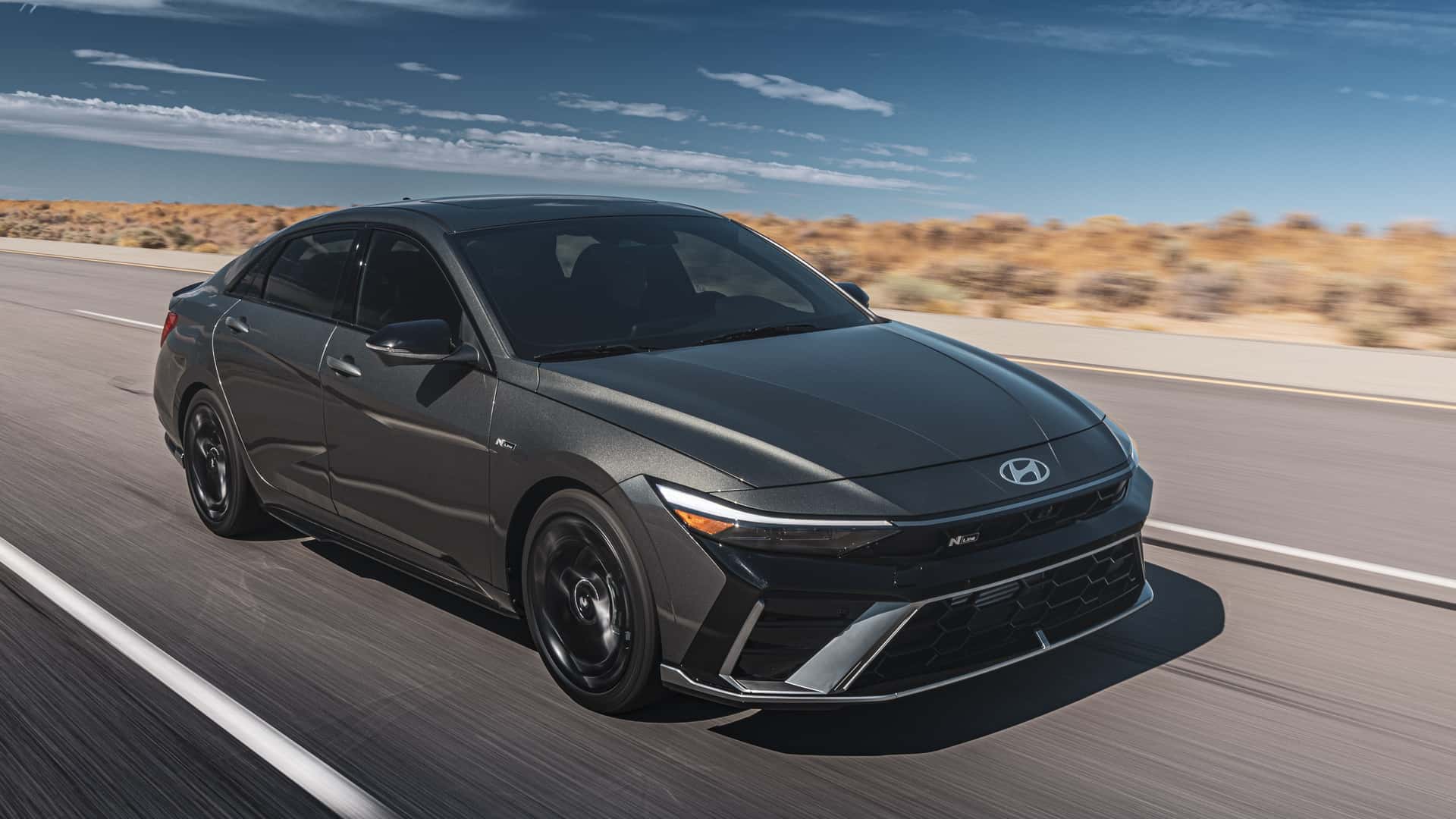
One of the most significant limitations of the Elantra’s Bluetooth system is its poor integration with smartphone features. The system provides basic audio streaming and hands-free calling functionality, but advanced features like voice assistant integration, message notifications, and app control are either poorly implemented or absent.
This limits the system’s usefulness for users who rely heavily on smartphone integration while driving. The user interface for managing Bluetooth connections is basic and lacks the sophistication found in more expensive vehicles.
The display is small and low-resolution, making it difficult to read device names and connection status information. The menu structure is simple but not intuitive, requiring users to navigate through multiple screens to access basic functions like device selection or audio source switching.
Call quality through the Elantra’s Bluetooth system is adequate under ideal conditions but degrades rapidly in challenging environments. The microphone array is basic and lacks sophisticated noise cancellation, making hands-free conversations difficult during highway driving or in windy conditions.
The speaker system used for call audio is also limited, often producing tinny, distorted sound that makes it difficult to understand callers clearly. The Elantra’s Bluetooth system also suffers from limited codec support, meaning that it cannot take advantage of higher-quality audio streaming capabilities available in modern smartphones.
This results in a lowest-common-denominator approach to audio quality that leaves users with compressed, artifacted sound regardless of their phone’s capabilities or the quality of their music files.
Software support for the Elantra’s infotainment system is limited, with infrequent updates that rarely address underlying Bluetooth connectivity issues.
The system’s hardware limitations mean that software improvements can only provide marginal benefits, leaving users with persistent connectivity and audio quality problems throughout the vehicle’s ownership period.
This highlights the importance of investing in vehicles with more robust infotainment systems for users who prioritize smartphone integration and audio quality.
5. 2024 Volkswagen Jetta
The 2024 Volkswagen Jetta concludes our examination of problematic Bluetooth implementations, representing the challenges that can arise when European-designed systems encounter the diverse landscape of North American smartphone usage patterns and network conditions.
While Volkswagen has a strong reputation for engineering excellence, the Jetta’s infotainment system demonstrates how regional differences in technology standards can create unexpected compatibility issues.
The primary issue with the Jetta’s Bluetooth system stems from its European origins, where different smartphone usage patterns and network standards can create compatibility problems with North American devices and carriers.
The system often struggles with smartphones that use specific carrier-locked features or regional variants of Android and iOS, leading to pairing failures and unstable connections that work perfectly with some devices while failing with others.
Audio quality through the Jetta’s Bluetooth connection is inconsistent, with performance varying significantly based on the specific smartphone model and software version being used.
European smartphones and those running international firmware versions often produce better results than their North American counterparts, suggesting that the system’s optimization prioritizes different market segments.
This creates a frustrating experience for users who may find that their smartphone works poorly with the system while a friend’s identical model works perfectly.
The Jetta’s Bluetooth system also exhibits timing and synchronization issues that appear to be related to differences in regional network protocols.
Users frequently report audio dropouts and synchronization problems during phone calls, particularly when connected to certain cellular networks.
These issues suggest that the system’s software wasn’t adequately tested with the full range of North American carrier networks and their specific implementation of voice and data protocols.
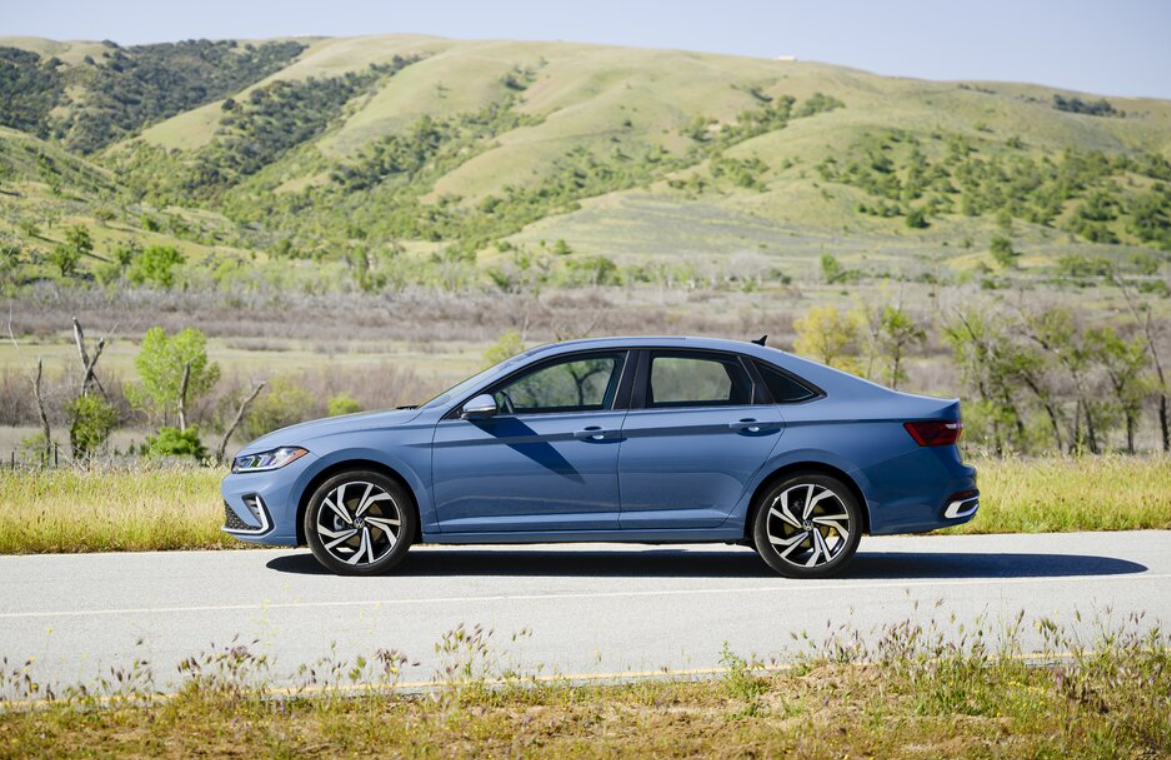
Device management in the Jetta is hampered by software that seems designed for different usage patterns than those common in North America.
The system’s approach to multi-device pairing and switching doesn’t align well with typical family usage scenarios, where multiple family members may need to quickly and easily connect their devices.
The system often becomes confused when multiple devices are present, leading to failed connections or connections to unintended devices. The user interface language and terminology used in the Jetta’s Bluetooth system sometimes reflect its European origins, using terms and concepts that may be unfamiliar to North American users.
This can make troubleshooting and system management more difficult, particularly for users who aren’t familiar with European automotive technology conventions.
The help system and error messages often assume knowledge of European telecommunications standards that may not be relevant to North American users.
One particularly frustrating aspect of the Jetta’s Bluetooth system is its interaction with North American-specific smartphone features and services.
The system often fails to properly integrate with services like Siri, Google Assistant, or carrier-specific features that are common in the North American market but may not be widely used in European markets where the system was originally designed and tested.
Software updates for the Jetta’s infotainment system are available, but often lag behind the introduction of new smartphone features and operating system updates that are common in the North American market.
This creates a situation where newly released phones or recently updated software may not work properly with the system until a compatibility update is developed and released, which can take months or even years.
The Jetta’s Bluetooth connectivity issues highlight the importance of region-specific testing and optimization for automotive infotainment systems.
While the underlying hardware may be capable of excellent performance, software optimization for specific regional markets, carrier networks, and usage patterns is crucial for providing a satisfactory user experience.
This serves as a reminder that global automotive brands must carefully consider regional differences when implementing technology systems that will be used by consumers with diverse needs and expectations.
Also Read: 5 SUVs With Best In-Car Wi-Fi and 5 With Weak Hotspots

